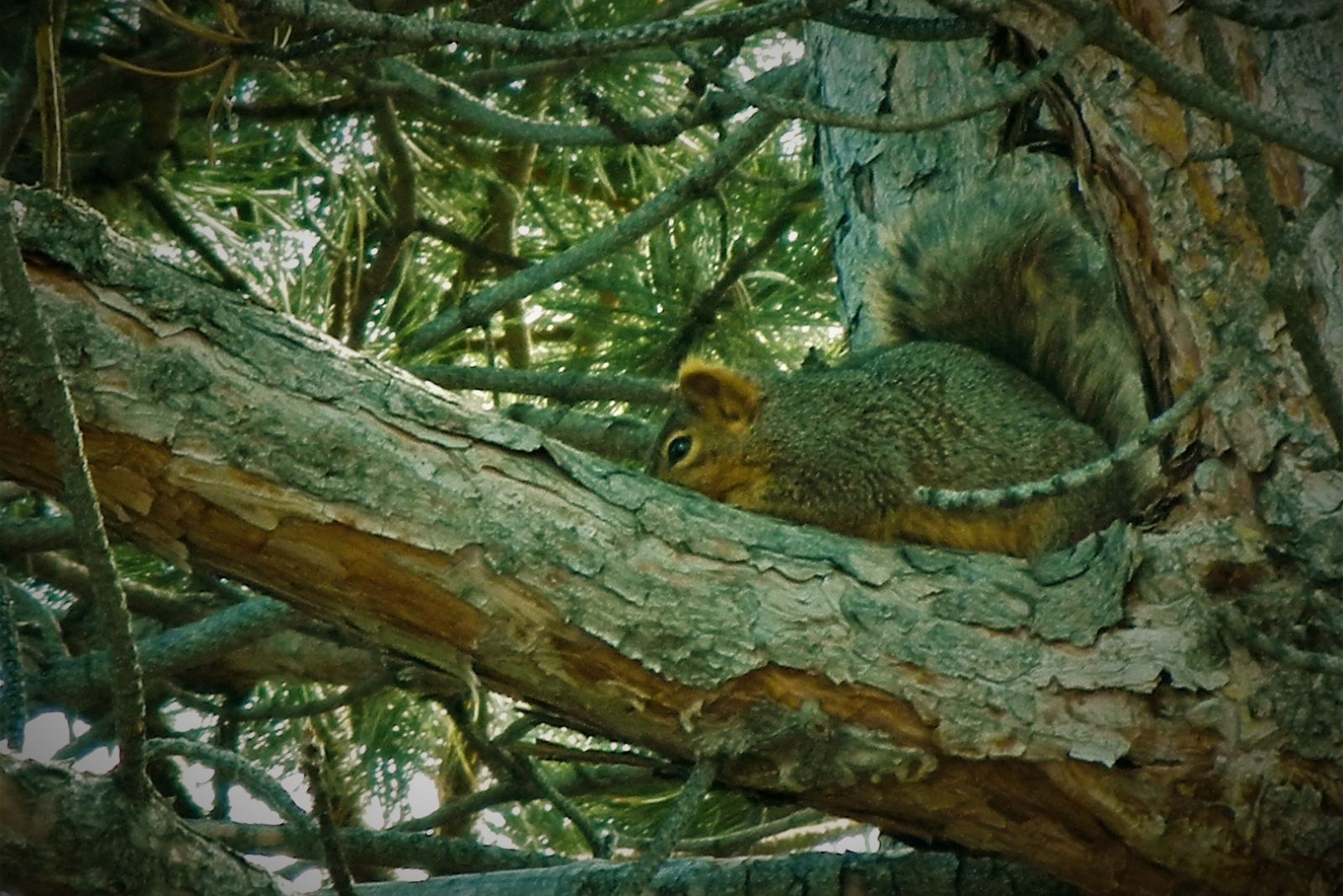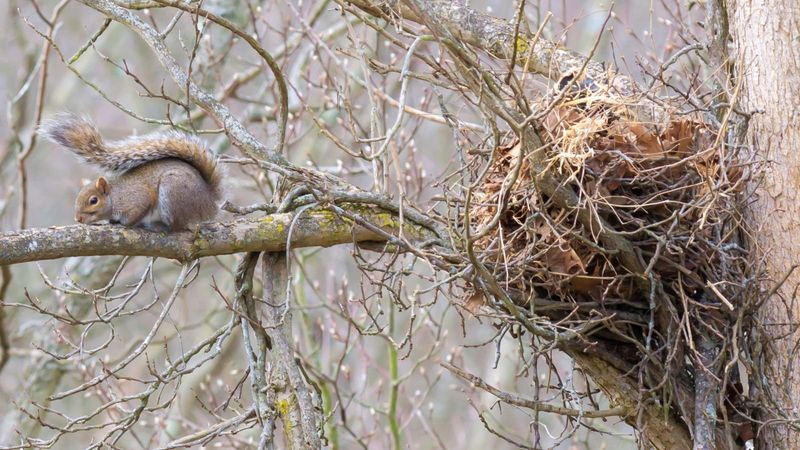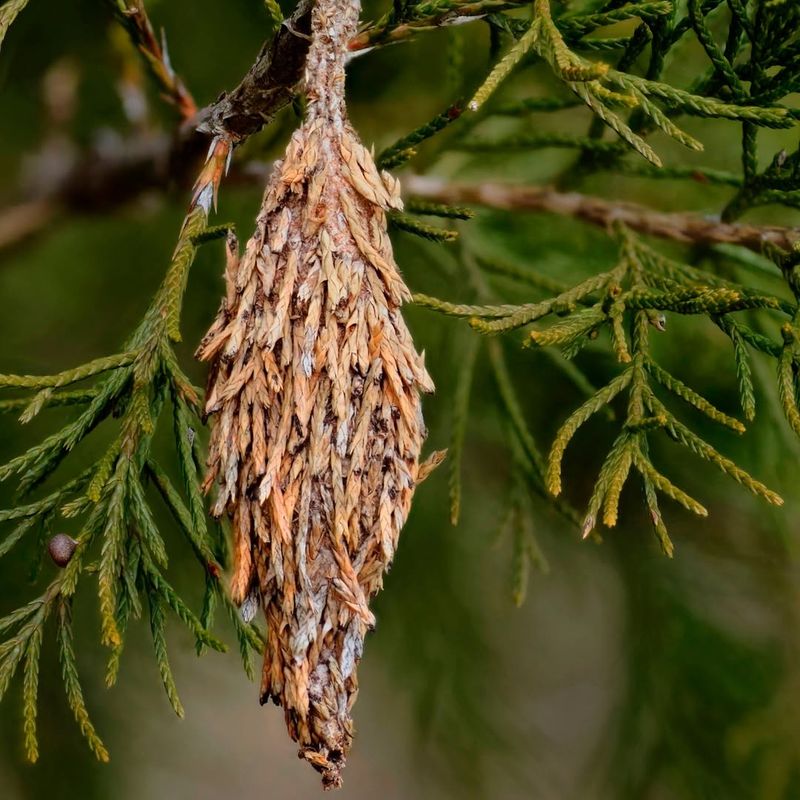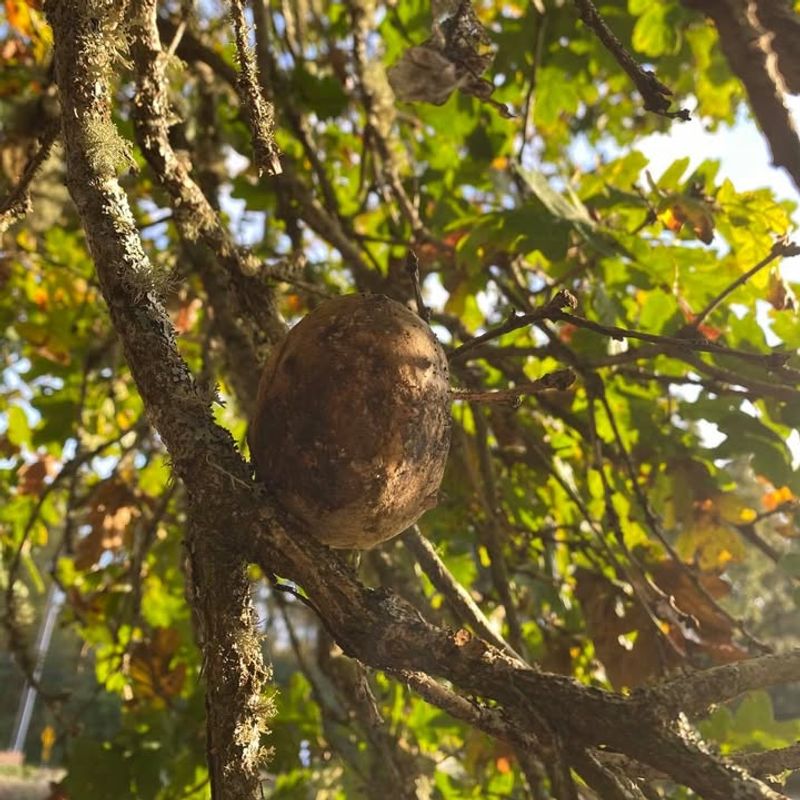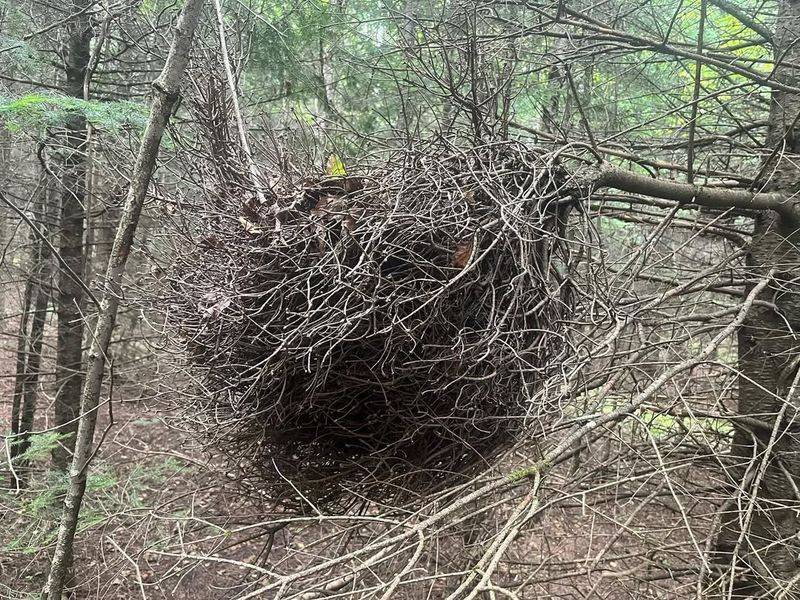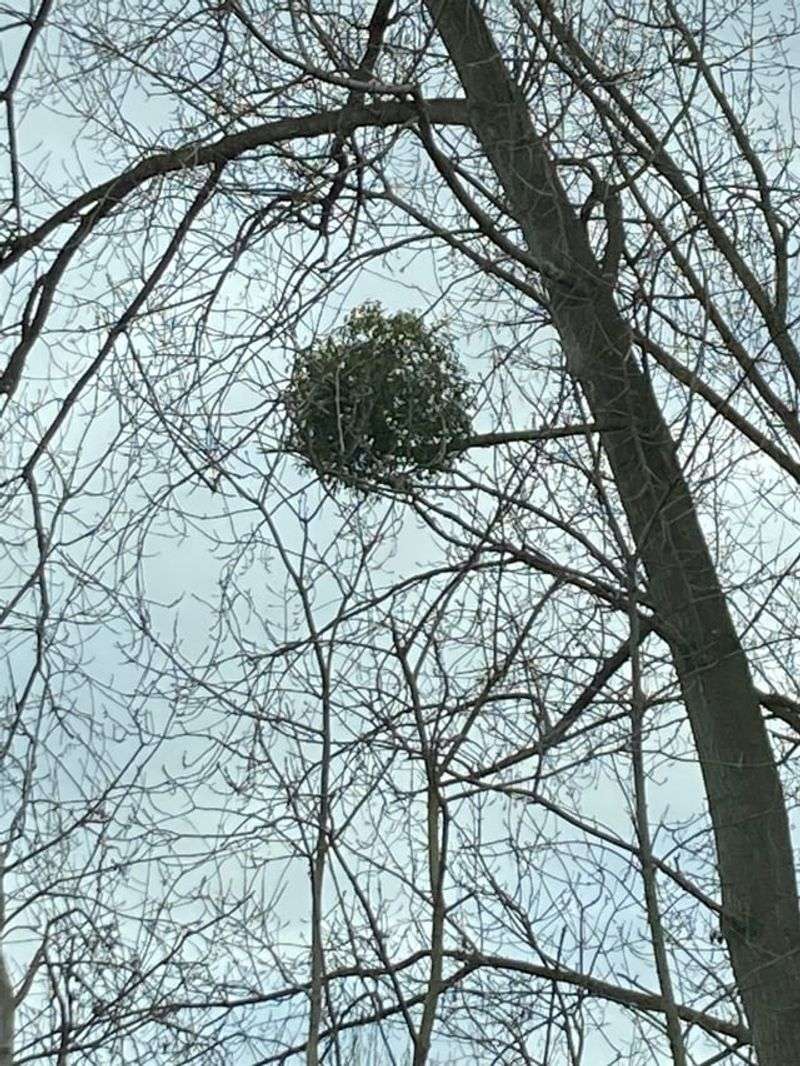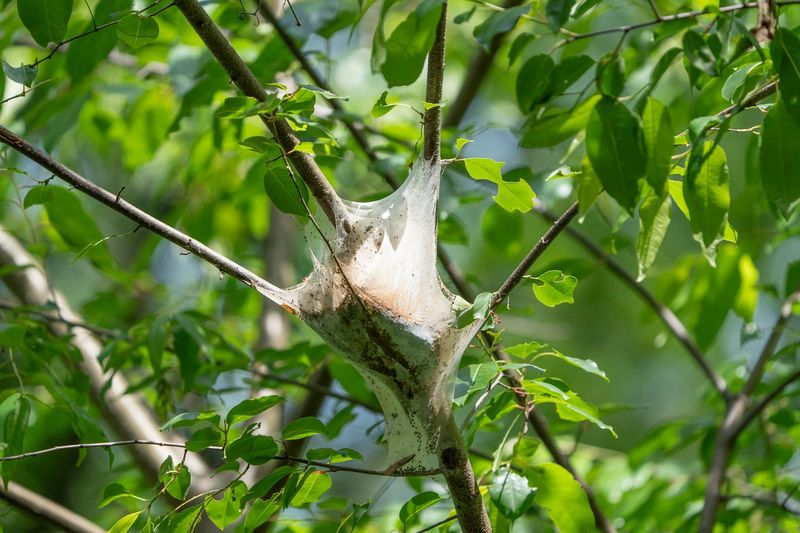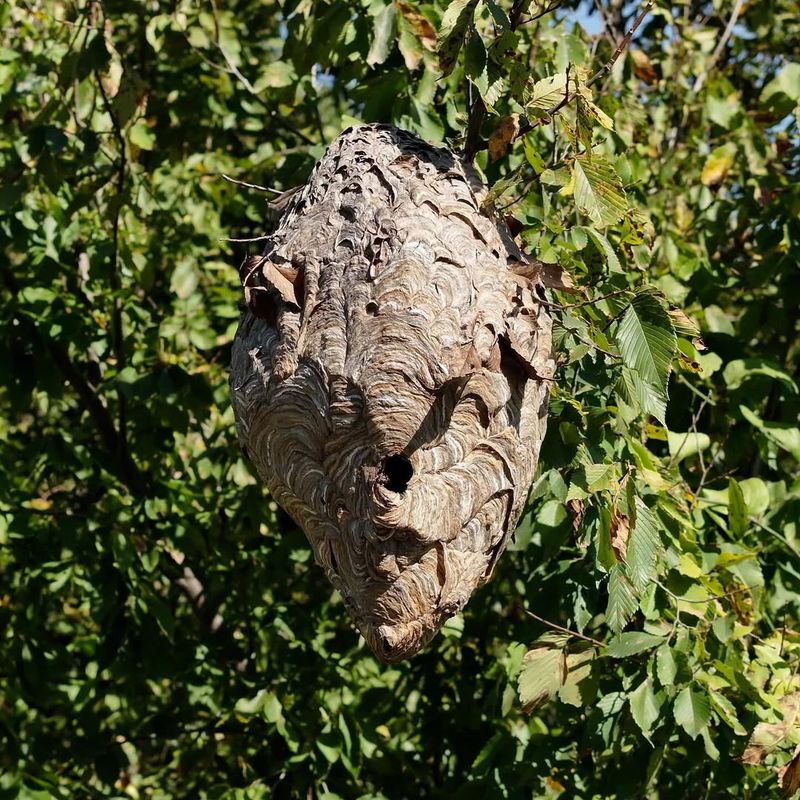Ever notice something unusual hanging in your Connecticut trees and assume it’s a bird nest? You might be surprised to learn that many of those mysterious clumps aren’t nests at all. From insect homes to plant growths, trees host all sorts of interesting structures that can fool even experienced nature watchers.
Understanding what’s really up there can help you better care for your trees and appreciate the incredible ecosystem in your own backyard.
1. Squirrel Dreys
Those big, messy-looking balls of leaves and twigs might belong to squirrels, not birds. Squirrels build these structures called dreys as cozy winter homes, weaving together sticks, bark, and leaves into surprisingly sturdy shelters.
Unlike bird nests, dreys are typically much larger and appear more disheveled. You’ll often spot them in the fork of tree branches during fall and winter when leaves have dropped.
Gray squirrels are master builders, sometimes creating multiple dreys throughout their territory for backup shelter options.
2. Bagworm Cocoons
Small, cone-shaped bags dangling from your evergreen branches signal bagworm trouble. These destructive caterpillars construct protective cases from silk and bits of the host tree, creating what looks like miniature pinecones or tiny nests.
Bagworms can seriously damage arborvitae, juniper, and spruce trees by stripping away foliage. Each bag may contain hundreds of eggs that will hatch into hungry larvae come spring.
Removing these by hand during winter prevents major infestations and protects your valuable landscape trees from devastating damage.
3. Galls
Weird bumps, balls, or fuzzy growths on branches are usually galls, not nests. Tiny wasps, mites, or other insects trigger trees to form these abnormal growths by injecting chemicals that cause cells to multiply rapidly.
Oak trees commonly develop round galls that resemble small apples or golf balls. While they look concerning, most galls won’t seriously harm healthy, mature trees.
Each gall type has a specific insect creator, making them fascinating examples of how insects manipulate plants for shelter and food.
4. Witches’ Broom
Dense clusters of tangled twigs that resemble old-fashioned brooms have a spooky name but natural causes. Witches’ broom results from fungal infections, mites, or genetic mutations that cause abnormal branch growth in one concentrated area.
These bizarre formations can appear on many Connecticut tree species, including birch, cherry, and spruce. While visually striking, they rarely threaten the tree’s overall health unless the infection spreads extensively.
Some gardeners actually prize certain witches’ brooms as unique ornamental features in their landscapes.
5. Mistletoe Clumps
Evergreen clumps visible in bare winter trees might be mistletoe, a parasitic plant that’s more than just holiday decoration. Mistletoe sends root-like structures into tree branches, stealing water and nutrients while creating distinctive green masses year-round.
Birds spread mistletoe by eating its berries and depositing seeds on branches through their droppings. Heavy infestations can weaken trees over time, especially if multiple clumps appear throughout the canopy.
Pruning infected branches helps control spread and maintains tree vigor.
6. Tent Caterpillar Webs
Silky white webs appearing in spring announce tent caterpillar arrival, not new bird families. Eastern tent caterpillars spin communal silk tents in tree branch forks, creating temporary homes while they devour nearby leaves during their larval stage.
Cherry, apple, and crabapple trees are favorite targets for these social insects. The caterpillars emerge from their tents to feed, then return for protection from predators and weather.
Removing tents early in the morning or evening when caterpillars are inside prevents widespread defoliation damage.
7. Hornet And Wasp Nests
Gray, papery structures attached to branches belong to hornets or wasps, not feathered residents. These social insects chew wood fibers and mix them with saliva to construct elaborate paper nests that can grow basketball-sized by late summer.
Bald-faced hornets often build high in trees, creating distinctive gray, teardrop-shaped nests. While intimidating, these insects actually help control pest populations by hunting other insects.
Most nests are abandoned after first frost, making safe removal much easier during winter months when occupants have died.

